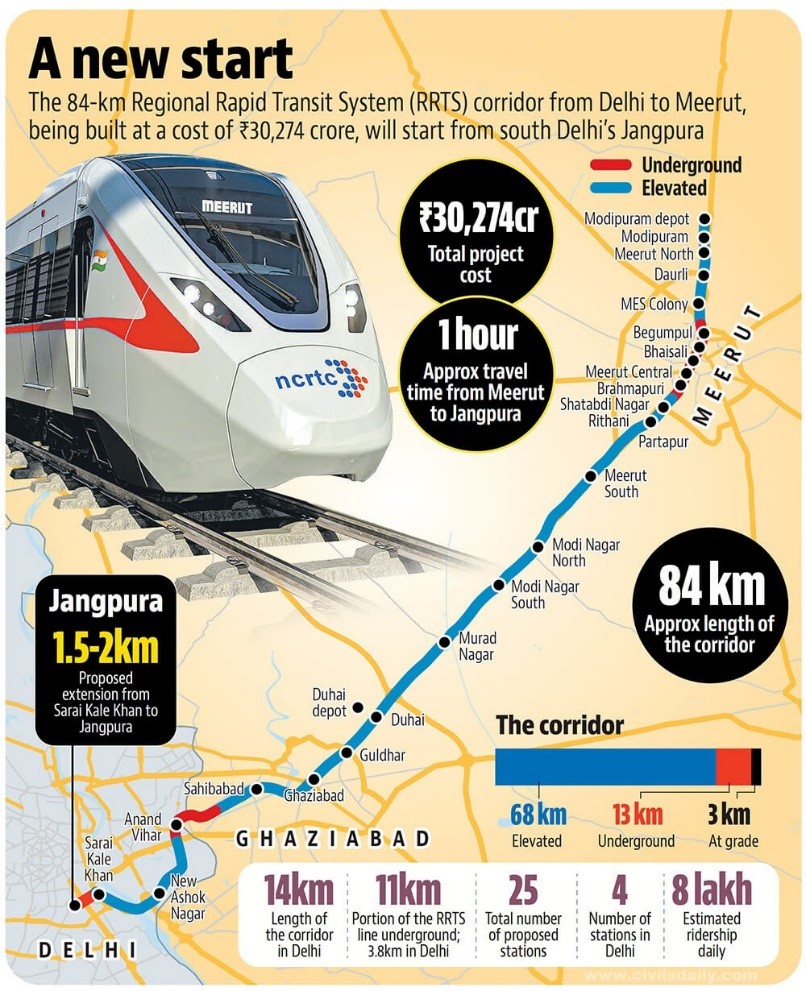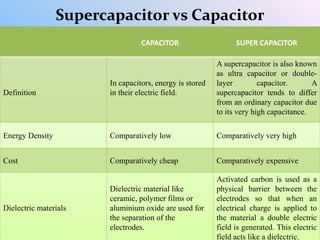- Gyan Sahayak Scheme for Contractual Teachers
- Why Special and Local Laws also need to be reformed?
- Regional Rapid Transit System (RRTS): Connecting Cities at High Speed
- Flexible Supercapacitors
Gyan Sahayak Scheme for Contractual Teachers
Context:
The Gyan Sahayak Scheme, introduced by the Gujarat state government, has generated controversy due to its approach of addressing teacher vacancies in government schools through contractual appointments.
The scheme has faced opposition from various segments of society.
Why Discuss This?
It is important to discuss the Gyan Sahayak Scheme as it represents an attempt to mitigate the chronic problem of teacher vacancies in government schools, using a contractual appointment model, and it is in line with a broader trend in India since the change in government in 2014.
Understanding the Gyan Sahayak Scheme:
- Interim Solution: The Gyan Sahayak Scheme aims to provide a temporary solution to fill teaching positions in primary, secondary, and higher secondary government schools until regular appointments can be made.
Basis in National Education Policy (NEP) 2020: The scheme draws inspiration from the NEP 2020, which emphasizes the need for teachers with interdisciplinary skills, beyond traditional academic subjects.
Scope of the Scheme:
- Applicability: The Gyan Sahayak Scheme is applicable to government and grant-in-aid schools, particularly Mission Schools of Excellence.
- Vacancy Statistics: The government plans to hire 15,000 Gyan Sahayaks for primary schools and 11,500 for secondary and higher secondary schools.
- Salary Structure: Gyan Sahaks receive varying monthly salaries based on their school level: Rs 21,000 for primary, Rs 24,000 for secondary, and Rs 26,000 for higher secondary.
- Vacancy Context: Gujarat faces an estimated 32,000 teaching vacancies in government and grant-in-aid schools, predominantly impacting primary and secondary schools. Some secondary schools rely on Pravasi teachers to meet staffing needs.
Eligibility Criteria:
- Primary Gyan Sahayak: Candidates must have cleared the Gujarat Examination Board’s Teachers Eligibility Test (TET)-2.
- Secondary and Higher Secondary Gyan Sahayak: Candidates should have cleared the Teacher Aptitude Test (TAT).
- Age Limit: Primary and secondary school Gyan Sahayaks must be under 40 years of age, while higher secondary school Gyan Sahayaks can be up to 42 years old.
Merit-Based Selection: Selection involves the creation of a merit list based on percentile ranks from TET-2 results, followed by the allocation of Gyan Sahayak positions to School Management Committees (SMCs) through district education officers.
Why Special and Local Laws also need to be reformed?
Context:
Recent legislative bills in India have focused on amending criminal laws, but they primarily address one aspect of the complex criminal justice system, largely overlooking the extensive Special and Local Laws (SLLs) that encompass critical offenses and procedures.
What are Special and Local Laws (SLLs)?
SLLs are laws that categorize cognizable crimes either under the ‘Indian Penal Code (IPC)’ or under the ‘Special and Local Laws (SLL).’ These laws are created by state governments to address specific issues.
Significance of SLLs
- Quantitative Importance: In 2021, nearly 39.9% of all cognizable offenses registered in India fell under SLLs, according to Crime in India Statistics.
- Qualitative Relevance: SLLs have sparked essential debates concerning the boundaries of the state’s power in criminalization, particularly regarding individual rights and liberties.
Need for Reform in SLLs
- Diverse Substantive Issues: SLLs, like the Unlawful Activities (Prevention) Act, 1967 (UAPA) and the Maharashtra Control of Organized Crime Act, 1999 (MCOCA), suffer from ambiguous and vague definitions of offenses, raising concerns about their application to civil or regulatory wrongs.
- Procedural Challenges: SLLs have compromised universally accepted due process values, with examples like expanded search and seizure powers under the UAPA and the admissibility of police-recorded confessions under the MCOCA.
- Bail Hurdles: Stringent provisions under SLLs, such as Section 43(D)(5) of the UAPA and Section 37 of the Narcotic Drugs and Psychotropic Substances Act, 1985, make securing bail nearly impossible.
Shift from Complete Codification
- IPC’s Original Vision: The Indian Penal Code (IPC), enacted in 1860, aimed to comprehensively codify all criminal laws, inspired by Jeremy Bentham’s idea of a “Pannomion” – a single, comprehensive collection of rules.
- Changing Landscape: Over time, there has been a shift towards enacting and applying SLLs, which has deviated from the original concept of complete codification.
- Unsuccessful Aspects: While the IPC faces criticism for its archaic morality and colonial roots, it is essential to acknowledge its success in codifying penal laws.
Addressing the Limitation: A Second Generation of Reforms
- Incorporating SLLs: All SLLs that criminalize or seek to criminalize specific conduct should be integrated as separate chapters within the larger penal code.
- Procedural Integration: SLLs creating distinct procedures for reporting offenses, arrests, investigations, prosecutions, trials, evidence, and bail should be included either as separate procedures within the CrPC or as exceptions to its general provisions.
Conclusion
As India increasingly relies on Special and Local Laws for various reasons, it is vital to ensure that these laws do not overshadow the original concept of codifying penal laws, as embodied in the IPC and CrPC.
Failing to incorporate the substantive and procedural aspects of SLLs into ongoing reform efforts represents a significant limitation. Therefore, a second generation of reforms is imperative to address these gaps and maintain the integrity of India’s criminal justice system.
Regional Rapid Transit System (RRTS): Connecting Cities at High Speed
Context
Indian Prime Minister Narendra Modi is set to inaugurate the first segment of India’s ambitious Regional Rapid Transit System (RRTS), a high-speed rail network aimed at enhancing regional connectivity.
Understanding the RRTS Project
- Integrated Mass Transit Network: The RRTS is an integrated mass transit network designed to promote balanced and sustainable urban development by improving connectivity and accessibility in the National Capital Region (NCR).
- Origin of the Idea: The concept of RRTS emerged from a study commissioned to Indian Railways in 1998-99, envisioning fast commuter trains connecting various NCR locations.
- National Capital Region Planning: The National Capital Region Planning Board (NCRPB) adopted the RRTS concept while developing its “Functional Plan on Transport for NCR-2032” and recommended eight RRTS corridors to connect NCR towns.
Development Agency
- Nodal Agency: The National Capital Region Transport Corporation (NCRTC), a joint venture of the Central government, Delhi, Haryana, Rajasthan, and Uttar Pradesh, is responsible for building the RRTS, also known as “Namo Bharat.” It operates under the Ministry of Housing and Urban Affairs.
- Scope of the Project: The RRTS project spans across the vast NCR, covering approximately 55,000 square kilometers and serving a population of over 46 crore with a combined GDP of an estimated $370 billion.
How RRTS Differs from Existing Systems
Impressive Speed: RRTS trains are designed to operate at speeds of 160 km/hour, with the capability to reach a maximum speed of 180 km/hour.
Comparatively Faster: In comparison, Delhi Metro trains typically operate at speeds of 100 km/hour to 120 km/hour.
Coverage: Compared to existing metro systems, the RRTS offers higher speeds, making it ideal for covering relatively longer distances across the NCR swiftly.
Frequency and Comfort: In contrast to Indian Railways, while RRTS covers shorter distances, it operates at higher frequencies and provides enhanced passenger comfort.
International Models: The RRTS draws inspiration from successful international models like the RER in Paris, Regional-Express trains in Germany and Austria, and the SEPTA Regional Rail in the United States, among others.
Objectives of the RRTS Project
Enhancing Connectivity: The RRTS aims to unlock the NCR’s potential by improving multi-modal connectivity at existing transportation hubs.
Decongesting Roads and Rails: One of the primary goals is to encourage public transportation, thus alleviating congestion on roads, highways, metro, and railway networks.
Economic Growth: By facilitating shorter travel times, the RRTS seeks to boost economic productivity in the region, allowing more economic activity to thrive around suburban locations in Uttar Pradesh, Rajasthan, and Haryana.
Corridors under the RRTS Project
Eight Corridors: The RRTS project encompasses eight corridors, with three being developed under Phase I:
- Delhi-Ghaziabad-Meerut (82 km)
- Delhi-Gurugram-SNB-Alwar (164 km)
- Delhi-Panipat (103 km)
Future Development: Future corridors include routes like Delhi – Faridabad – Ballabgarh – Palwal, Ghaziabad – Khurja, Delhi – Bahadurgarh – Rohtak, Ghaziabad-Hapur, and Delhi-Shahadra-Baraut.
Sarai Kale Khan Hub: The RRTS station at Sarai Kale Khan will serve as the project’s central hub, connecting all three Phase I corridors, bridging the gap between Delhi and Uttar Pradesh, Haryana, and Rajasthan.
Flexible Supercapacitors
Context:
Researchers at Sanatana Dharma College in Alappuzha have developed a flexible symmetric supercapacitor with a hybrid electrode. This development is significant in the quest to create efficient and stable electrode materials for supercapacitors, driven by the increasing demand for energy storage solutions.
Objective:
The primary goal of this research is to enhance the energy density of supercapacitors, aiming to approach the levels seen in traditional batteries.
Key Findings:
- Conducting Polymers in Supercapacitors:
- Conducting polymers, known for their pseudocapacitive properties, play a crucial role in the development of supercapacitor electrodes.
- Hybrid Electrode Composition:
- The hybrid electrode in this study comprises high-molecular-weight polyaniline (PANi) combined with nanostructured vanadium pentoxide (V2O5).
- Notably, this hybrid electrode is created by dispersing PANi with a secondary dopant in mcresol, leading to superior performance.
- Synergistic Effect:
- The integration of high-molecular-weight PANi with nanostructured V2O5 addresses the limitations of individual materials and demonstrates a synergistic effect, resulting in improved overall performance.
- Exceptional Electrochemical Properties:
- The flexible supercapacitor built using these innovative electrodes exhibits outstanding electrochemical characteristics.
- It achieves very high energy density and exceptional cycling stability, surpassing previously reported values for supercapacitors using aqueous electrolytes.
Supercapacitors vs. Capacitors:
Supercapacitors are energy storage devices that differ from traditional capacitors in several key ways:
- Supercapacitors are designed to store electric energy and have two terminals.
- These devices use conducting polymers and other advanced materials to store energy, in contrast to standard capacitors.
- Supercapacitors are capable of achieving higher energy densities compared to traditional capacitors.
- They are integral components in various applications due to their ability to store and release energy efficiently.
- Supercapacitors can bridge the gap between traditional capacitors and batteries, making them essential for addressing growing energy demands.
Working Principle of Capacitors:
- Capacitors store electric energy by accumulating electric charges on two plates separated by a specific distance.
- One plate accumulates a positive charge, while the other accumulates a negative charge when a voltage is applied during charging.
- The charging time is the period during which the capacitor reaches its maximum charge.
- Once charged, the capacitor retains the stored energy and can serve as an energy source when connected to a load.
- When connected to a load, current flows from one plate to the other, dissipating the stored charge.
- The time taken for this discharge is referred to as the dissipation time.
Conclusion, The development of a flexible hybrid electrode composed of high-molecular-weight PANi and nanostructured V2O5 demonstrates a significant advancement in supercapacitor technology. This research showcases exceptional electrochemical properties, cycle stability, and high energy density, which can help address the increasing energy demands and bridge the gap between traditional capacitors and batteries.




